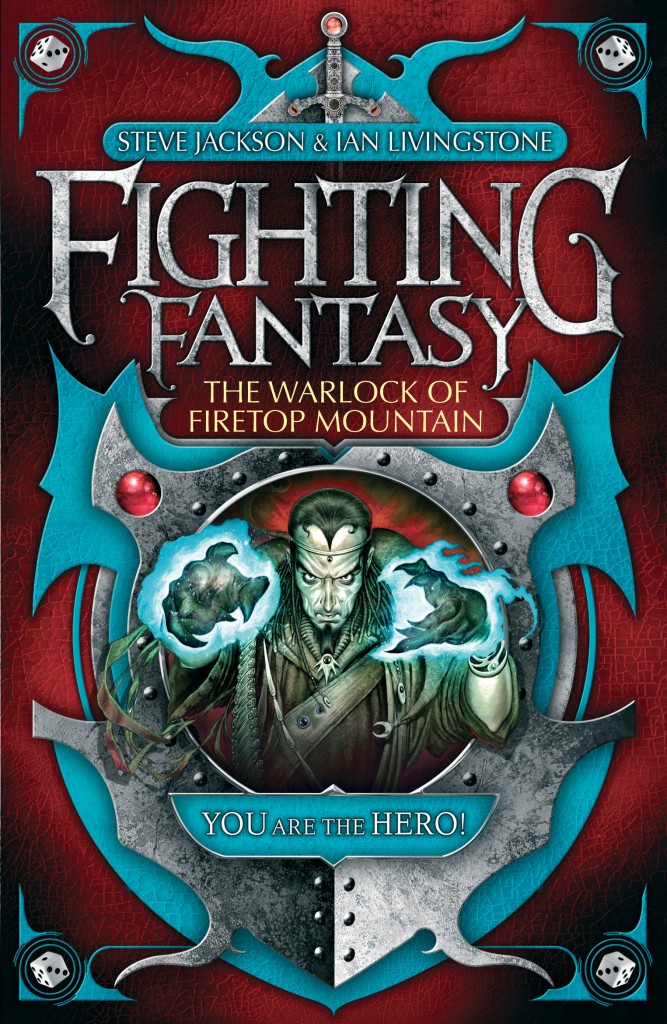So now I'm more efficient with my paragraphs, but I still had a big problem with my early gamebooks.
Looking at my first adventure, War of Deities part 1, you will notice that most of the paragraphs are just descriptions of the room that you are in and the people in them. This 400 paragraph book has 26000 words.
Moving over to my latest gamebook to date, Sharkbait's Revenge, we see that it is a 100 paragraph book with just under 22000 words. And it has a shorter rules section.
When I started writing gamebooks, I just didn't write narrative.
 |
| And this orc is a 3rd level fighter with a +1/+1 double sword and a +2 amulet of natural armour. |
The way I originally approached writing gamebooks was the same as my approach the games - it was all about the numbers. I didn't care what my sword looked like if it gave me a +2 bonus in combat. I went for the 100 gold pieces and not the lovely description of the pile of treasure. I was enjoying my experience immensely, but I just was not accessing the whole experience available to me.
This was good at the time, but then when it came for me to write a gamebook, I completely missed those things out.
This is the kind of feedback I got after my second entry to the Windhammer Prize for short gamebook fiction at Arborell when I entered City of the Dead. The winner and the merit award prizes were more rules light and focused more on narrative. Indeed, Kieran Coghlan's Waiting For the Light had nothing but an inventory list. There wasn't even a background, but it is still great because of the narrative and the mystery of the book.
I've just read Heart of Ice and there are some brilliant descriptions and characters in the book and this is why it is a contender for greatest gamebook of all time (don't we need a Fighting Fantazine type survey on this kind of thing already?)
 |
| A picture I took of the Himalayan foothills. I would think about how to describe this lovely place. |
So when I wrote microadventures, I fleshed them out with good descriptions of the area the hero was in. I imagined the smells and the sights and how the hero might feel in that situation.
 |
| An ancient Egytian scimitar. Not just another non descript method of dealing 2 stamina points of damage. |
I went to museums and took pictures of artefacts that I could describe in my books. I also made sure that all of my characters, even the bit part ones, had a defining characteristic. I also thought of certain well known phrases or scenes which would give tons of information on the mood of the scene.
For example, In my short book In the name of Love, I had a big 'NOOOOOOOOOOOOOOOOOO!' when the soldier's lover was shot with a crossbow (number of Os may vary with each big 'NOOOOOOOOOOOOOOO!')
I would also read about actual historical events to get a feel for what it was actually like to be in a setting that matched the time I was in. A couple of examples include a forensic account of a battle bought to my attention on the Fabled Lands blog and a link to an article about how human skulls were used as drinking vessels at an H.P. Lovecraft blog.
I have found www.tvtropes.org to be an invaluable tool for things like this. However, be warned - I also found it highly addictive.
I wanted everything to be memorable. And it had to be if all our readers were looking at would be the rules, the background and about 10 paragraphs.
This is what I now do - Sometims I feel like I am going over the top by drawing on well known tropes and cliches. I also feel like I am being less original, but then readers need something to connect to.
I don't want to go that far, but I need to have a balance of having enough familiar material to pull the readers in with enough original material to make my book a unique and entertaining experience.
 |
| Can you have too much description? What do you think, Tolkien? |
However, it seems that there can be too much description for some people. I realised this from the comments on this post in Fantasy Gamebook that minimal description allows people to create their own narrative about their character.
So then it goes down to how much is too much? What should be in the book and what should be left for the reader to fill in? Is there just one answer to this question?
Next time, I'll be writing about the Fabled Lands setting in a lead up to my review of The War Torn Kingdom.
Whoops - my finger slipped
.jpg) |
| He's not a villain. He's more 'armless than most. |
 |
| Get back in the book, Zagor. It's not time yet. |
Speaking of accidental publishing, Murray will be publishing a playthrough of City of Thieves on his highly amusing Turn to 400 blog. Keep an eye out for that.
Lots to look forward to. Have fun!
No comments:
Post a Comment